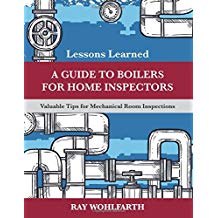Brian Tuohey: How to build a high-performance culture

Like most distributors, I’m always looking for better ways to compete in an ever more competitive market.
But one area we often overlook is how to fully engage the greatest asset we have in our companies to help us achieve our mission and guarantee our long-term success. Our teams are the greatest asset we have to accomplish that goal. It’s easy for us to cut prices, reduce costs and look for new customers, but it’s not as easy to engage and motivate our employees to be as passionate about our companies as we are.
I had the privilege to attend the ASA Emerging Leaders Spring Meeting in May. There, I attended a session with David Friedman who talked about practical and sustainable ways to build a high-performance culture in our businesses. The “ah ha” moment for me came when my company’s next- generation leaders, who also attended Friedman’s session, came to me to discuss how Collins Pipe should begin implementing a high-performance culture in our business and suggested we hire Friedman to help drive the process for us. Sounds simple, right? Well. the answer is really yes and no. Every company has a distinct and different culture. In fact, most people don’t realize where that culture came from. Most company cultures are created by the most dominant personalities of the company and those individuals have a real and direct impact on how your people perform. You don’t want to leave creating a high-performance culture to chance by hoping the right personalities emerge to drive the culture of your company.
In reading many articles about the benefits of implementing high-performance cultures, they all say there are several keys to success. The first and most important is changing the culture of the company, and that’s easier said than done. A company’s culture is the way a company has always done things.
Most of our cultures are focused on driving sales by employing a high-performance management strategy that seeks to focus our employees on securing long-term customers and not just an immediate order. The benefit of realigning our culture is we end up with employees who care as much about the success of our company as we do as owners and that requires a free flow of information between the leadership team and the front-line employees defining what exactly are the company’s core values and how they should be implemented.
Being transparent and sharing information is one of the easiest things to do, yet many managers resist and prefer to keep information close to their vests. Creating a climate of empowerment and trust from the top down and trusting everyone in the chain of command to do the right thing for the organization is another critical component of a high-performance culture. We get there by setting clearly defined goals and expectations and measuring against those goals which keep everyone focused on the correct mission.
Creating a customer-centric strategy where everyone is focused on meeting the needs of the customer and then establishing accountability among team members to ensure it happens is yet another critical component of this process.
But, by far, the most important factor is the “buy-in” from your senior-leadership team that must take every opportunity to support and drive the program. How exciting would it be to have your frontline team as excited about achieving the company’s success as you are? But it all doesn’t work unless you are completely committed to enhanced training and employee growth.
If you’re interested, ASA provides our members with many of the tools and professional resources to help distributors build their own high-performance culture. Our educational programs, job descriptions, performance assessments and professional staff have been helping many of our members engage in this process with their teams.
As you look into the benefits of employing a high-performance culture at your company, don’t hesitate to give ASA a call to see how it can help.
This article was originally titled “Building a high-performance culture” in the September 2018 print edition of Supply House Times.
Looking for a reprint of this article?
From high-res PDFs to custom plaques, order your copy today!




